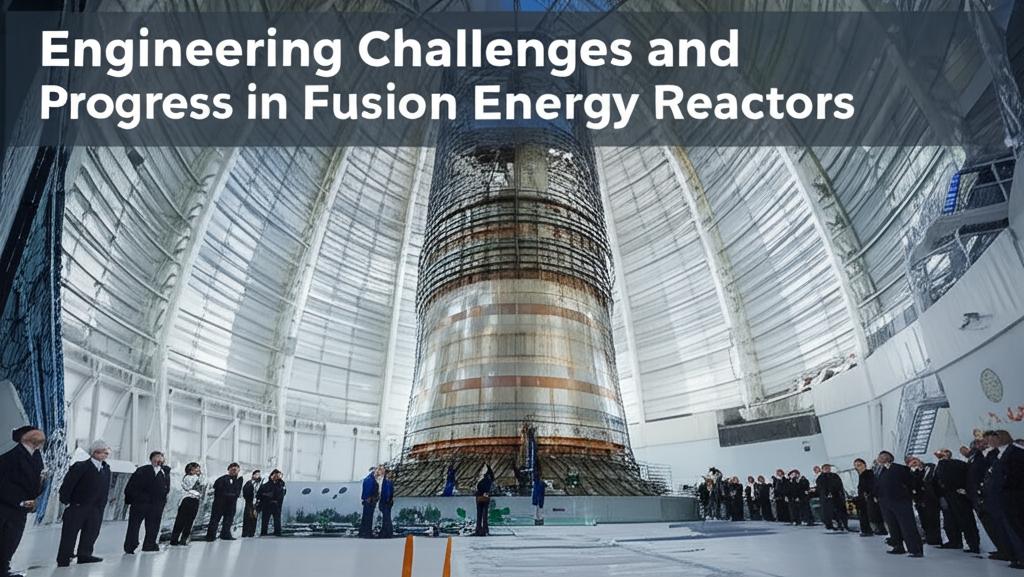Fusion energy, the process powering the sun and stars, promises a near-limitless, clean, and safe energy source for humanity. By fusing light atomic nuclei (typically isotopes of hydrogen like deuterium and tritium) into heavier ones, immense amounts of energy are released. However, replicating this stellar process on Earth presents formidable engineering challenges.
The Core Challenge: Ignition and Sustained Burn
The fundamental goal is to heat a fuel plasma to extraordinarily high temperatures (over 100 million degrees Celsius) and confine it at sufficient pressure and duration to allow fusion reactions to occur at a rate that produces more energy than is required to initiate and sustain the reaction. This break-even point and beyond (ignition and sustained burn) is quantified by the Lawson criterion.
Two primary approaches dominate fusion research:
- Magnetic Confinement Fusion (MCF): Uses powerful magnetic fields to contain the hot plasma, preventing it from touching the reactor walls. Tokamaks and stellarators are the leading MCF designs.
- Inertial Confinement Fusion (ICF): Uses intense lasers or particle beams to rapidly compress and heat a tiny fuel pellet, causing it to implode and ignite fusion reactions before it flies apart.
Engineering Hurdles in Magnetic Confinement (MCF)
MCF reactors like tokamaks face significant engineering obstacles:
- Plasma Confinement & Stability: Creating and maintaining stable magnetic fields strong enough to confine the turbulent, superheated plasma is incredibly complex. Plasma instabilities and disruptions (sudden energy loss) can damage the reactor and must be controlled.
- Materials Science: Reactor components, especially those facing the plasma (divertors, first wall), must withstand extreme heat fluxes (MW/m²) and intense neutron radiation. This bombardment degrades materials over time, necessitating the development of advanced, low-activation structural materials and heat-resistant plasma-facing components.
- Plasma Heating: Efficiently heating the plasma to fusion temperatures requires powerful auxiliary systems, such as neutral beam injection (NBI) and various radiofrequency (RF) wave heating methods (like Ion Cyclotron Resonance Heating - ICRH, and Electron Cyclotron Resonance Heating - ECRH).
- Tritium Breeding: Deuterium is abundant in seawater, but tritium is radioactive with a short half-life and scarce. Future power plants must breed their own tritium fuel by having neutrons from the fusion reaction interact with lithium blankets surrounding the plasma chamber. Designing efficient and safe tritium breeding and handling systems is crucial.
- Superconducting Magnets: Generating the necessary strong magnetic fields requires large, powerful superconducting magnets operating at cryogenic temperatures. Designing, manufacturing, and reliably operating these complex magnet systems is a major engineering feat.
- Remote Handling: The intense neutron flux activates reactor components, making hands-on maintenance impossible. Sophisticated remote handling systems and robotics are essential for repairs, replacements, and decommissioning.
Engineering Hurdles in Inertial Confinement (ICF)
ICF also presents unique challenges:
- Driver Technology: Developing lasers or particle beams with sufficient energy, power, efficiency, and repetition rate to compress fuel pellets many times per second for a power plant is demanding.
- Target Fabrication: Manufacturing millions of identical, precisely layered fuel pellets at low cost is essential for a power plant economy.
- Chamber Design: The reaction chamber must withstand repeated micro-explosions (equivalent to sticks of dynamite) and efficiently extract the released energy while protecting the driver optics.
- Symmetric Implosion: Achieving the near-perfectly symmetrical implosion required for ignition is extremely sensitive to pellet imperfections and driver beam uniformity.
Progress and Key Projects
Despite the challenges, significant progress is being made:
- ITER: The massive international MCF experiment under construction in France aims to demonstrate sustained burning plasma, producing 500 MW of fusion power from 50 MW of input heating power (Q=10). While facing delays and cost overruns, ITER drives crucial engineering R&D across all challenge areas.
- Private Fusion Ventures: A growing number of private companies (e.g., Commonwealth Fusion Systems, Helion Energy, Tokamak Energy) are pursuing innovative designs, often leveraging advancements like high-temperature superconductors, aiming for faster paths to commercialization.
- JET: The Joint European Torus (JET) in the UK, a precursor to ITER, has achieved record fusion energy output, demonstrating key physics principles and testing materials.
- NIF Ignition: The National Ignition Facility (NIF) in the US achieved scientific breakeven and ignition using ICF in 2021 and 2022, a landmark scientific achievement proving the fundamental physics. Engineering challenges remain for energy gain and repetition rate needed for a power plant.
The Road Ahead
Achieving commercial fusion power remains a long-term endeavor. After projects like ITER demonstrate sustained burn, demonstration power plants (DEMOs) will be needed to prove technological feasibility, reliability, and economic viability. This path requires sustained international collaboration, increased public and private investment, and continued innovation in materials science, plasma physics, and complex systems engineering.
While the engineering path is steep, the potential reward – clean, abundant, and safe energy – continues to drive global efforts to unlock the power of the stars on Earth.

